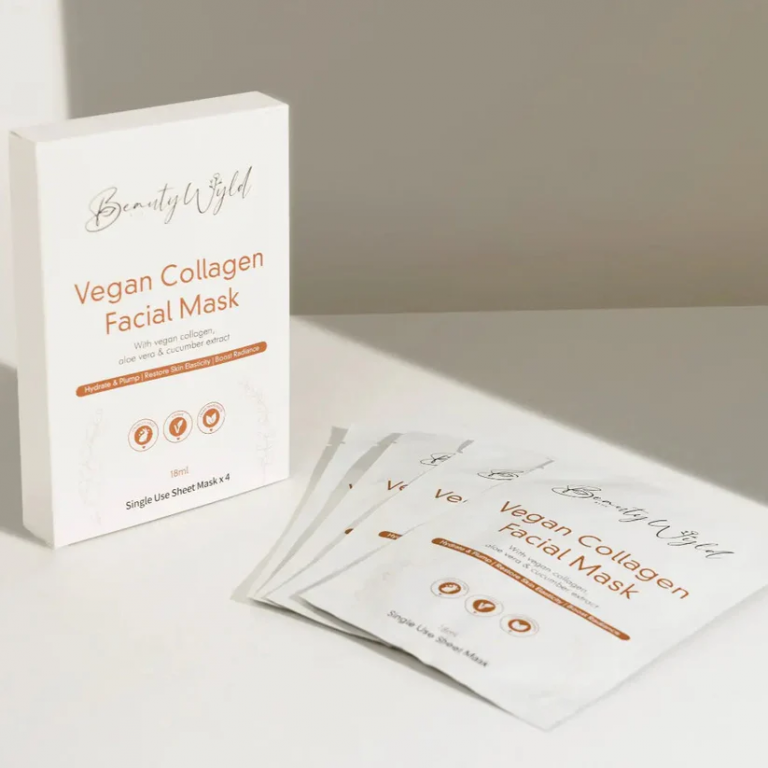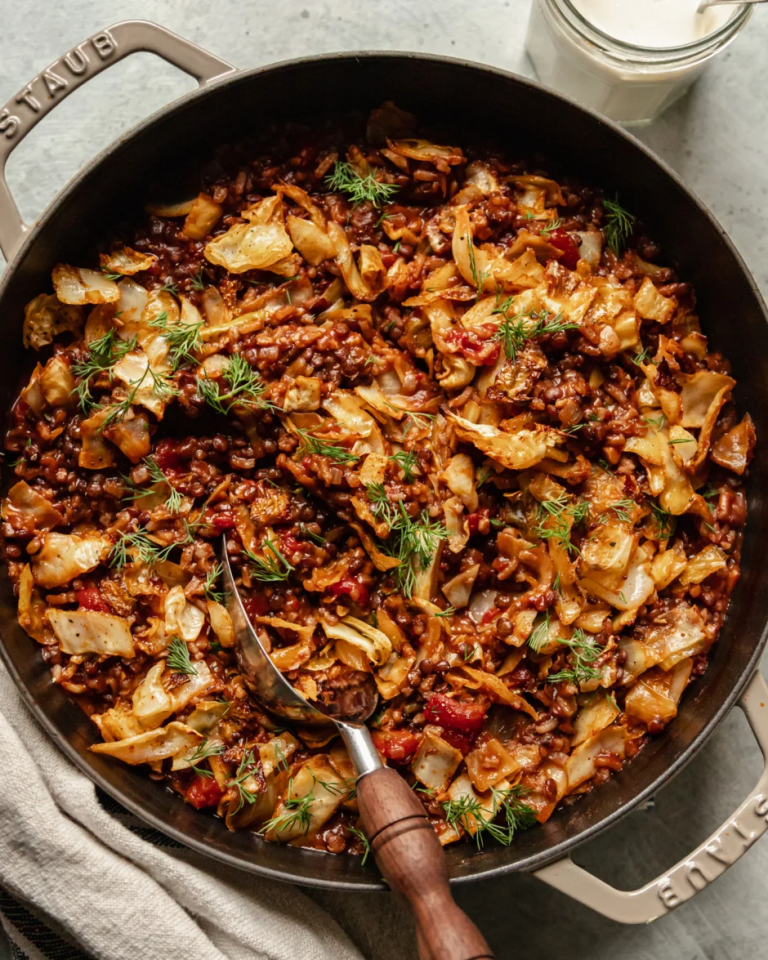
Vegan gravy isn’t just a side note for plant-based meals anymore. It has become a key player, bringing warmth and depth to dishes without relying on animal products. Making your own from scratch means you control the flavour and ingredients, avoiding the pitfalls of many store-bought options.
This post will guide you through creating a rich, satisfying jug of homemade vegan gravy that feels just like the real thing. You’ll learn simple steps to build layers of savoury taste that complement any meal, proving that vegan cooking can be both easy and rewarding.
This easy 15-minute vegan gravy (Broke Bank Vegan) is very simple to make, and only needs a few ingredients. It’s made with all-purpose flour and good veggie stock, onion, garlic, tamari (like ‘posh soy sauce’), salt, pepper and vegan butter (Flora is free from palm oil).
The secret ingredient is white miso (umami-rich Japanese condiment – omit if pregnant/nursing as it’s unpasteurised).
Before cooking, read up on kitchen safety for people and pets.
Made too much gravy? No problem. Allow it to cool completely before storing in an airtight container in the fridge for up to three days. Reheat gently on the stove, adding a splash of vegetable broth if it’s too thick.
Why Choose Vegan Gravy?
Choosing vegan gravy is more than just a dietary preference; it’s a choice that benefits your health, supports a kinder approach to animals, and helps reduce environmental impact. Aside from being delicious, vegan gravy offers a range of advantages that make it a smart addition to any meal.
Healthier and Lower in Saturated Fats
Traditional gravies made from meat drippings and cream often pack a hefty dose of saturated fats and cholesterol. These can contribute to heart disease and other health concerns if eaten frequently. Vegan gravy, by contrast, uses plant-based ingredients like vegetable stock, mushrooms, and herbs, which contain little to no saturated fat. This means you can enjoy a rich, savoury sauce with less guilt and better nourishment for your body.
Aligns with Cruelty-Free Eating
Vegan gravy fits perfectly with a cruelty-free lifestyle. It avoids the use of animal products and the suffering involved in meat and dairy production. By opting for vegan gravy, you show respect for animals and support farming practices that don’t rely on raising livestock. This simple swap makes a quiet yet powerful statement about your values.
Smaller Environmental Impact
Animal farming is a significant contributor to greenhouse gas emissions and uses large amounts of water and land. Vegan gravy has a much lighter carbon footprint because it’s made with plant-based ingredients. Choosing it helps cut back demand on resource-heavy industries, making your meal more sustainable. Even small changes, like serving vegan gravy, add up when it comes to protecting the planet.
Adds Depth and Comfort to Vegan Meals
Vegan dishes sometimes get unfairly labelled as bland or lacking warmth. A jug of homemade vegan gravy bursts with umami richness that brings any plate to life. Whether it’s poured over mashed potatoes, roasted vegetables, or stuffing, it adds that hearty, comforting touch we all crave at the table. It’s the sauce equivalent of a warm blanket on a chilly day, making every bite more satisfying.
Easy to Personalise and Experiment With
Because vegan gravy starts with simple pantry staples, you can customise it to suit your taste. Add your favourite herbs, a splash of tamari or soy sauce for extra savouriness, or a touch of wine or balsamic vinegar for complexity. This flexibility lets you create a gravy that perfectly fits your meal or mood without relying on pre-made mixes loaded with additives.
Choosing vegan gravy means enjoying all the richness and flavour of a classic sauce with none of the downsides. It’s a choice that supports your health, your values, and the planet, while making every dish feel a little more special.
Essential Ingredients for Traditional Flavour
Making vegan gravy that tastes truly satisfying depends on choosing the right ingredients to build deep, comforting flavours and a smooth texture. Without animal stocks or drippings, it’s important to bring in plant-based components that can deliver similar richness and body. This means picking strong umami sources and the perfect thickener to give your gravy that classic feel. Let’s explore how you can get that balance just right.
Using Umami Boosters to Mimic Meat Flavour
Umami is often described as the fifth taste, giving savoury richness that we usually associate with meat or broth. Without animal products, umami becomes the backbone of your vegan gravy’s flavour. Including a few potent plant-based ingredients can lift your sauce from bland to deeply satisfying.
Here are some top vegan umami boosters to try:
- Mushrooms: Especially dried porcini or shiitake, mushrooms bring an earthy depth. Soaking dried mushrooms in hot water and adding the soaking liquid to your gravy concentrates that rich taste.
- Seaweed: Kelp or kombu add a subtle oceanic savouriness, similar to seafood stocks. Just a small strip simmered in vegetable stock can enhance flavour without dominating.
- Miso Paste: This fermented soybean paste is packed with umami and a touch of sweetness. Stir a spoonful in near the end of cooking to preserve its delicate flavour.
- Tomato Paste: Concentrated tomatoes offer acidity and robust savouriness. A small amount caramelised gently adds body and complexity.
- Nutritional Yeast: Known for its cheesy, nutty notes, it’s a handy dry ingredient that boosts flavour and adds a slight thickness.
To get the best from these ingredients, start with a good vegetable stock base and add umami boosters little by little. Let the flavours meld gently over low heat, and taste as you go. The key is layering these natural savoury elements to mimic the depth you expect from a traditional meat-based gravy.
Choosing the Right Thickener for Texture
Texture plays a huge role in how “real” your vegan gravy feels. Too thin, and it lacks presence; too thick, and it can become gloopy or pasty. The best thickening agents give body without changing the flavour.
- Here’s a quick look at common thickeners and how they measure up:
- Plain flour has a mild wheat taste, for a smooth creamy gravy
- Cornstarch has a neutral taste for a glossy gravy
Arrowroot has a neutral taste, for thick gravy
Flour is the classic choice for gravy and gives a creamy mouthfeel with a slight wheat flavour that usually blends well with other seasonings. It thickens steadily when cooked slowly with fat.
Cornstarch works faster and gives a glossy shine, but it needs careful stirring and sudden heat to avoid lumps. It also breaks down if boiled too long, so add it near the end of cooking.
Arrowroot is great if you want a very clear, light sauce. It’s gentle on flavour and perfect if you’re avoiding gluten. It thickens quickly at low temperatures but can lose its power if heated too much.
To pick the right one for your gravy, think about the meal and how you want it to look and taste. For everyday use, flour or a mix of flour and arrowroot offers the best balance. For clear sauces or gluten-free cooking, arrowroot or cornstarch might be better.
Using a little plant-based fat like olive oil or vegan butter to cook the flour first helps develop a golden roux, which deepens flavour and smooths texture. Whisk in your stock gradually, keeping the consistency just thick enough to coat the back of a spoon without being stiff.
In short, a great vegan gravy isn’t just about flavour but also the feel on your tongue. The right thickener makes all the difference in turning simple ingredients into a luscious sauce that’s worthy of any roast or pie.
How to Build Your Vegan Gravy
Now that you know what ingredients to use, the real fun begins. Making a jug of proper vegan gravy is all about layering flavours and getting the texture just right. This section breaks down the process into clear stages, from creating a flavourful base, adding the key elements that bring depth and thickness, to adjusting for the perfect finish. Follow these steps carefully for a smooth, rich sauce that’s ready to pour over any dish.
Preparing the Base: Guide on sautéing onions, garlic and mushrooms (if used) to form the flavour base, including tips on caramelisation and balancing flavours
The first step to your vegan gravy’s delicious depth is building a flavour base. This usually starts with onions, garlic and sometimes mushrooms, which bring a natural sweetness and earthiness when cooked properly.
- Use a good splash of oil or vegan butter in a heavy pan over medium heat. This helps develop flavour and prevents sticking.
- Add chopped onions first. Cook slowly, stirring often, until they turn translucent and soft. Don’t rush this part—soft onions release their sugars and begin to caramelise, which adds richness.
- Once the onions are softened, add minced garlic. Garlic cooks faster and can burn easily, so keep stirring and watch it closely.
- If you are using mushrooms, add them next. Mushrooms should be chopped fairly small to cook evenly. They’ll release moisture at first, then start to brown after their water evaporates. This browning, or caramelisation, gives a deep umami kick.
- Stir frequently, adjusting the heat if needed to prevent burning. The goal is a golden colour rather than dark burnt bits.
- At this stage, you may notice your kitchen fills with a warming, savoury aroma. This signals your base is taking shape.
To balance the natural sweetness from the onions and mushrooms, consider adding a tiny pinch of salt early on. This draws out moisture and intensifies flavour. If the mixture feels a little sharp, a pinch of sugar or a splash of balsamic vinegar can add a touch of balance.
Taking your time here gives the whole gravy a solid foundation to build from. Avoid rushing or high heat, as burnt flavours can spoil the end result.
Incorporating Flavour Enhancers and Thickeners: Detail the process of adding umami boosters, herbs, and the thickening agent with timing and technique for perfect integration
Once your base is golden and fragrant, it’s time to add the seasoning and thickening elements that turn simple vegetables into something surprisingly rich.
- Start by stirring in any umami boosters such as tomato paste, miso, nutritional yeast or a splash of soy or tamari sauce. These should be added while the pan is still warm so their flavours meld with the base without overwhelming it.
- Next, toss in your chosen fresh or dried herbs like thyme, sage or rosemary. They add a fresh layer of aroma but are best added early enough to infuse without turning bitter.
- Now comes the thickening step. If using flour, sprinkle it evenly over the cooked mix and stir well. This creates a roux, which thickens the gravy and adds a hint of toasted flavour. Cook the roux for a minute or two, stirring constantly, to remove any raw flour taste.
- For cornstarch or arrowroot, whisk them first in a little cold water to make a smooth slurry. Gradually stir this slurry into your gravy towards the end of cooking to avoid lumps.
- Slowly add your vegetable stock or mushroom soaking liquid to the pan in small batches, whisking continuously to combine it smoothly with the roux or slurry. Gradual addition prevents lumps and helps you control the gravy’s thickness.
- Keep the heat on medium-low and allow the gravy to simmer gently. This slow cooking lets the flavours marry and the texture to thicken evenly.
By adding these elements in stages and stirring well, you ensure the flavours integrate fully and the texture stays perfectly smooth. If lumps form, whisk vigorously or strain the gravy through a fine sieve if needed.
Adjusting Consistency and Seasoning: Explain how to assess and adjust gravy thickness and seasoning towards the end of cooking to ensure optimum taste
The final stage is where your vegan gravy truly comes to life. At this point, taste and texture checks guide your final tweaks.
- To check thickness, dip a spoon into the gravy and lift it out. The sauce should coat the back of the spoon thickly without dripping off immediately. If it’s too thin, return the gravy to the heat and simmer, stirring regularly to reduce it gently. For a quick fix, stir in a little more slurry, but do this gradually.
- If the gravy feels too thick, add a splash of warm vegetable stock or water, whisking in until you reach the right consistency.
- Taste carefully and adjust seasoning as needed. Vegan gravies sometimes need a little extra salt, a dash of soy sauce for umami, or a splash of vinegar or lemon juice to brighten the flavours.
- If the gravy feels flat, a small spoon of miso, nutritional yeast, or a pinch of black pepper can lift it.
- Turn off the heat once the balance and texture are spot on.
Storage tips: Keep your gravy in a covered jug or airtight container in the fridge for up to three days. To reheat without losing smoothness, warm gently in a pan over low heat, whisking frequently. Add a splash of stock or water if it thickens too much.
By focusing on gradual seasoning and consistent stirring, you end with a rich, smooth vegan gravy full of character. It’s ready to pour, spoon or drizzle onto anything that craves a little extra comfort.
Perfect Vegan Gravy Every Time
Making vegan gravy that delivers rich flavour and smooth texture can feel tricky at first, but with a few handy tips, you’ll be pouring out a jug of proper homemade sauce on repeat. These pointers help you avoid common mistakes, boost flavour, and keep your gravy warm and glossy for any occasion. Think of these as your gravy-making toolkit for reliable success.
Make It Ahead for Deeper Flavour
If you have a little extra time, preparing your gravy a few hours or even the day before makes a surprising difference. Flavours have a chance to mingle and develop, mellowing any sharp edges and making the sauce taste more rounded. Simply cover and refrigerate, then warm gently before serving. This approach also lets you check the consistency again and tweak if needed.
Customise Your Seasoning to Suit the Dish
Vegan gravy is flexible, so don’t hesitate to tweak the seasoning for what you’re serving. For example:
- Roasts or potatoes benefit from robust herbs like rosemary and thyme.
- Hearty stews welcome a splash of balsamic vinegar or a pinch of smoked paprika.
- Light vegetable dishes often suit a hint of lemon juice or fresh parsley for brightness.
Adjusting salt and umami boosters like soy sauce, miso, or nutritional yeast just before serving lets you tailor the final taste perfectly. Remember, it’s easier to add more seasoning than remove it.
Keep Your Gravy Warm and Pourable
Reheating and serving vegan gravy without it thickening too much or becoming clumpy needs care. Heat it slowly over low heat, stirring frequently. If it starts to thicken too much, whisk in a little warm vegetable stock or water to loosen the sauce. Avoid boiling once thickened as this can break down the texture or dull the flavours.
Holding gravy warm in a covered jug or thermos is great for parties or buffet tables. A gentle heat source like a bain-marie keeps it ready to pour while preventing it from drying out.
Avoid Common Pitfalls
- Lumpy gravy usually happens when flour or thickener is added too quickly or without stirring. Whisk your thickening agents smoothly into cold water before adding slowly to the hot base.
- Bitter or burnt flavours result from rushing the onion or mushroom base on high heat. Cook gently and patiently to draw out sweetness instead of scorch.
- Thin, watery sauce often means not reducing the liquid enough or underusing your thickener. Simmer longer or add a little more roux or slurry gradually.
Where Vegan Gravy Shines
Vegan gravy isn’t just for tofu roasts or nut loaves; it’s brilliant with:
- Mashed potatoes or creamy cauliflower mash
- Roasted root vegetables
- Vegan shepherd’s pie or casseroles
- Savoury pancakes or Yorkshire puddings
- Pies and pasties where a good drizzle lifts the whole dish
It also suits casual meals and festive occasions alike, adding a proper homemade touch that’s both comforting and full of flavour.
With these straightforward tips, you can confidently make vegan gravy that hits all the right notes: creamy, savoury and utterly satisfying every single time.
Where to Buy Good Vegan Gravy
Marigold Organic Gravy Powder is free from palm oil, made with carrot/onion juice, spices, white mushrooms, chicory and yeast extract. You can find it in health stores and some supermarkets.
The best-selling gravy brands are marketed as ‘traditional and natural’. But in fact, most are just a cheap mix of ingredients and nothing to write home about: palm fat etc.
Most are also owned by big multi-national brands (not ‘nostalgic’ at all and nothing to do with the local organic food movement).
Conclusion
Making a jug of proper vegan homemade gravy brings together flavour, texture and values in one simple sauce. Choosing plant-based ingredients means a healthier, cruelty-free option that doesn’t skimp on depth or comfort. By focusing on umami-rich components, the right thickener and careful seasoning, anyone can create a smooth, rich gravy that enhances any meal.
With the steps and tips shared, it’s easy to experiment and tailor the recipe to your taste. Take a moment to try your own version, enjoy the satisfaction it brings to the table and share your favourite vegan gravy tricks with others. Your perfect jug of gravy is just a few simple ingredients away.






